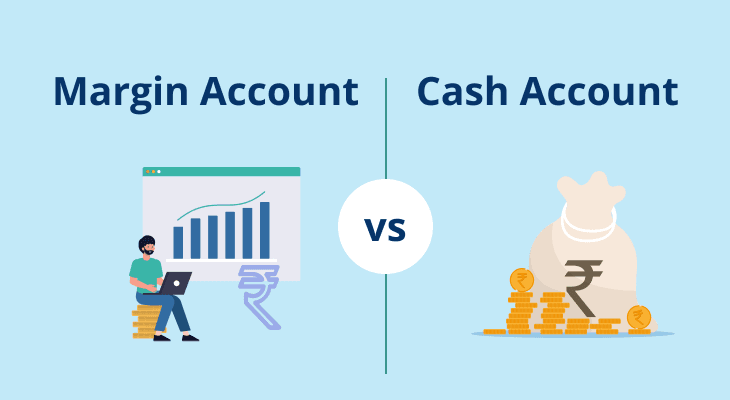
Margin of Safety: All you need to know
Margin of Safety is a financial ratio that represents the difference between the ‘real’ value of a security and its current market price. The concept of Margin of Safety helps investors identify the cushion or safety net that is available in case their estimate of a stock’s intrinsic value proves to be incorrect or unforeseen events adversely impact investments.
A key concept in value investing, Margin of Safety involves buying assets that are undervalued by the market. By purchasing undervalued assets with a substantial Margin of Safety, value investors aim to generate long-term returns that exceed the market average. Warren Buffett is a big advocate of Margin of Safety and uses this financial ratio while shortlisting stocks for investment. So, if you are a value investor, then learning about Margin of Safety will help you make calculated investment decisions. Read on to know the meaning of Margin of Safety, how it is calculated, and how you can leverage it in your investment decisions.
What is Margin of Safety?
Trading with Margin of Safety means buying stocks whose current market price is lower than their deemed intrinsic value. Investors and analysts use the principles of fundamental analysis to arrive at the intrinsic or ‘real’ worth of a company’s stock and establish Margin of Safety subsequently.
For example, if your analysis leads you to estimate the intrinsic value of a stock to be ₹100 and it is currently trading at ₹80, the Margin of Safety is ₹20 or 20%. This means that even if your estimate is slightly off, (say the intrinsic value is not ₹100 but ₹90), the investment is still likely to provide a positive return. This ‘safety’ allows you to trade with lower-than-usual downside risk.
Margin of Safety can also act as a form of risk management tool that can give potential gains in the long term. While it cannot guarantee avoidance of all losses, it is known to reduce a significant negative impact.
How to calculate Margin of Safety?
Margin of Safety is a popular accounting term that has made its way into investing and trading. In investing, this principle allows you to buy securities at a value well below their deemed actual value while giving you enough margin for calculation or estimation-related errors. The formula to calculate Margin of Safety is:
Margin of Safety = 1 − (Current Market Price of the Security / Intrinsic Value)
Margin of Safety is usually expressed as a percentage but can also be denoted as an absolute rupee value. Intrinsic value is calculated using the qualitative and quantitative tenets of fundamental analysis. There is no fixed formula for this, but the process involves gathering and evaluating financial data of the company you are looking to invest (using income statements, profit and loss reports, sales and revenue projections, etc.,) and applying financial ratios such as debt-to-equity ratio (DE), price-to-earnings ratio (PE) and price-to-book ratio (PB), etc. to arrive at Margin of Safety.
Seeing the Margin of Safety in action
To demonstrate how you can use the concept of Margin of Safety while investing in stock market , let us assume you are interested in buying the shares of ABC Ltd. currently trading at ₹1,000. After studying the company’s balance sheet and revenue statements, you realise that the stock’s actual intrinsic value should be ₹800. This means the current market price is ₹200 higher than the intrinsic value. To further safeguard yourself against losses you may apply a 20% Margin of Safety over the intrinsic value and set the desired purchase price at ₹640. Naturally, it may take a while for the current market price to drop to this level from its current price of ₹1,000. However, if and when it does happen, you will be able to buy with conviction and at low-risk.
Advantages of using Margin of Safety in investing
Reduced Downside Risk
By buying an asset using Margin of Safety, you pay less than the intrinsic value of the asset. This means that even if the asset loses some value in the short term, your downside risk is reduced.
Potential For Higher Returns
Margin of Safety also offers the potential to make higher returns if the value increases to its intrinsic value or beyond since you are purchasing an undervalued asset.
Protection Against Uncertainty
All forms of investment come with their own set of risks and uncertainties that can cause assets to drop in value. Using a Margin of Safety, you can safeguard yourself against such unforeseen events.
Better Decision-Making
One of the key precursors to using Margin of Safety includes careful exploration of the company’s financial performance, stability, and growth prospects in order to identify the asset's intrinsic value. This thorough research leads to more informed and better decision-making.
Margin of Safety is a valuable tool because it helps you manage risk by providing a buffer against unforeseen events or errors in your estimations. By investing in assets with a significant Margin of Safety, you can protect yourself against losses and potentially earn higher returns. The larger the Margin of Safety, the more protection you have against adverse events. But don’t forget, investing with a Margin of Safety requires patience and discipline. It is essential to avoid the temptation to invest in assets that are overpriced and wait for opportunities to purchase assets with a Margin of Safety. This discipline can lead to better long-term investment results.
FAQ
What is Margin of Safety in investing?
Margin of Safety is a useful financial concept that helps ascertain the difference between the intrinsic value of an asset and its current market price. It is a measure of the degree of safety associated with an investment, where the greater the Margin of Safety, the less risky the investment is considered to be.
How is the Margin of Safety calculated?
To calculate the Margin of Safety, subtract the market price of an asset from its intrinsic value. The intrinsic value is an estimate of the asset's true worth, based on its earnings, assets, liabilities, and other factors.
Is the Margin of Safety only applicable for shares?
The Margin of Safety is a financial concept that can be applied to any type of asset, including stocks, bonds, real estate, and commodities. However, the calculation of intrinsic value and the determination of a suitable Margin of Safety can vary depending on the asset class. For example, in the case of stocks, the intrinsic value may be estimated using earnings or cash flow, while in the case of real estate, the intrinsic value may be estimated based on rental income and property value.


